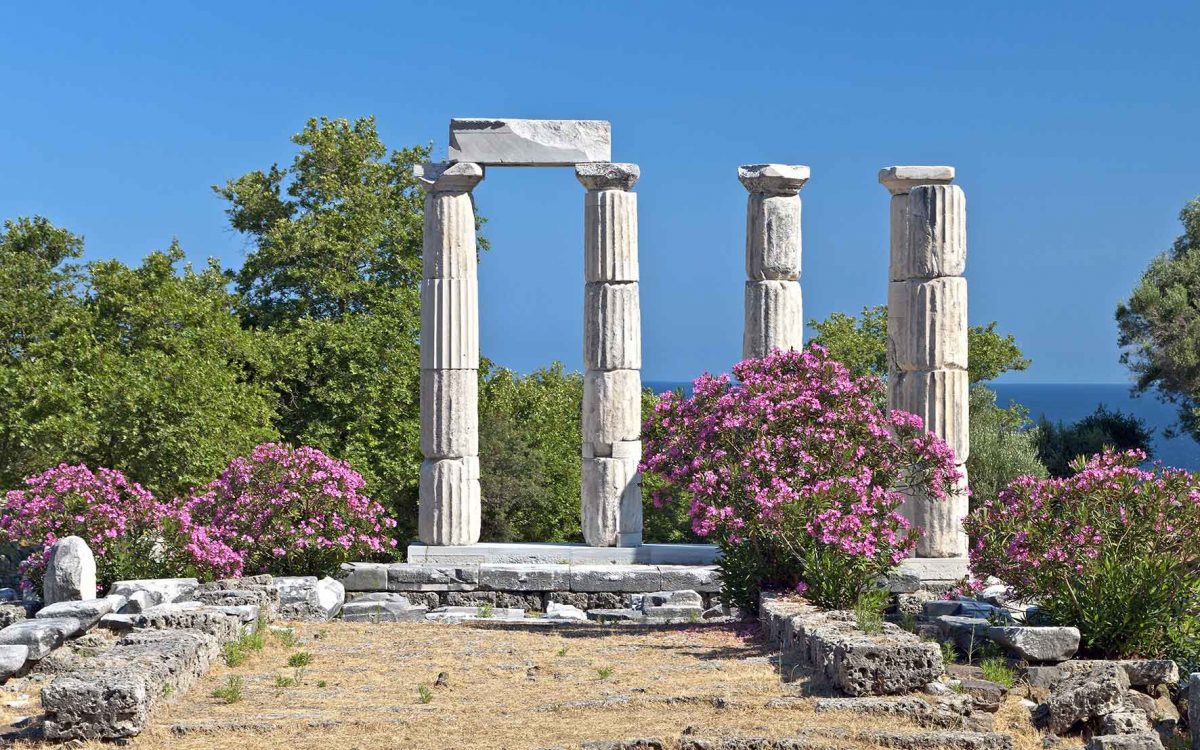The Sanctuary of the Great Gods was one of the most important Panhellenic religious sites in the ancient Greek world.
Located on the island of Samothrace in the northeast Aegean, it was celebrated for its Mystery Cult centered around the worship of a pre-Hellenic earth goddess, the “Great Mother,” who the ancient Greeks associated with Demeter, goddess of fertility. In Samothracian coinage, she is often depicted as a seated woman with a lion at her side.
Religious activity at the site can be traced back to the 7th century BC. Early rituals included the worship of numerous chthonic gods (“subterranean” gods or spirits of the underworld), whose identities remain obscure. Ancient sources refer to them collectively as the Kábiroi (“Cabeiri”), as it was considered taboo to speak their names out loud.
A monumental building program was undertaken in the 4th century BC, including the construction of the Epopteion, a type of temple with an ornate facade and a row of columns on the front (prostyle). It bears the inscription of Hieron, or “Holy Place,” and was the site of sacred rituals and ceremonies. A major annual festival took place in mid-July, drawing envoys and pilgrims to the island from across the Greek world.
The famous Winged Victory (Nike) of Samothrace, now in the Louvre, was discovered at the Sanctuary in 1863.












